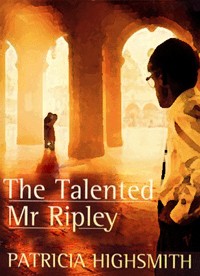
Okay, so Anthony Minghella put those words into Ripley’s mouth for the 1999 film adaptation of Patricia Highsmith’s novel The Talented Mr Ripley, but in writing them he cut straight to the core of Highsmith’s brilliant, amoral psychopath, a character who could have as easily been the creation of Camus or Dostoevsky, and who was to dominate Highsmith’s thinking to such a degree through the years that she was occasionally known to sign letters off with his name.
Born in Fort Worth, Texas in 1921, Highsmith’s early years were marked by family upheaval. Her parents’ divorce when she was 10 took her to New York and back to Texas again, as she was shunted between relatives, creating an uneasy relationship with her mother which was never to recover. Famously she claimed her mother drank turps to try and abort her. As a child she became fascinated with the psychology of aberrant behaviour and displayed signs of it herself as an adult. The Price of Salt – a lesbian novel, published under a pseudonym – was inspired by a woman she encountered while working at Bloomingdales and subsequently stalked after acquiring her address from credit card details.
The book opens with Ripley ducking into a bar away from a man he suspects to be some kind of detective, pursuing him over one of the small grifts he has been living off, but the man has an entirely different motive. Mr Greenleaf has a problem with his son Dickie, who’s taken off to Europe and refuses to come home and face the responsibilities associated with his father’s money. Mistakenly believing the two of them to be friends he asks Ripley to go to Italy and try to persuade Dickie to return home.
Dickie Greenleaf, handsome, carefree and self-assured in a way that only the born-rich ever are, represents everything which Ripley isn’t and being so close to this gilded bohemian inspires a roiling blend of adoration and envy in him. Ripley charms Dickie, amuses him with impressions and a certain gaucheness which the alpha-male Dickie enjoys ridiculing, finally earning his trust by admitting that their meeting was no chance encounter, but rather stage managed and funded by Mr Greenleaf. The bond is sealed but, this being Highsmith’s writing, it has to break.
Dickie quickly tires of Ripley. He doesn’t belong in that world and even a chameleon nature and a sharp mind can’t hide the fact that he’s a parasite. But Ripley has grown accustomed to Dickie’s lifestyle and it holds an attraction much more persistent than the man himself. For Ripley there is only one course of action, murder Dickie and take his place. Highsmith presents the act as inevitable and we follow Ripley’s breakneck machinations as he tries to elude the police, slipping between Dickie’s identity and his own in order to fend them off. And we want Ripley to get away with it. Like Dickie we are charmed by him and we want to see him succeed.
Highsmith’s writing is spare, almost clinical, with no purple prose or literary pyrotechnics, and this pared back style is perfectly suited to the amorality of her characters, not just Ripley, but the cast of middle class murderers, stalkers and adulterers who populate her other books. By now we’re accustomed to white collar psychopaths and the idea that something unpleasant is always lurking behind a respectable facade, but when The Talented Mr Ripley was released these were genuinely original concepts, and Highsmith was a mistress of the stripped veneer.
The later instalments of The Ripliad are slightly uneven in my opinion. Ripley remains as fascinating as ever and seeing this genial psychopath settled in a French rural idyll, with a flighty wife and bourgeois neighbours, makes them worth reading, but the plots occasionally stretch credulity. The Talented Mr Ripley is the major work in Highsmith’s oeuvre and a significant piece of 20th century crime fiction which you owe it to yourself to read.